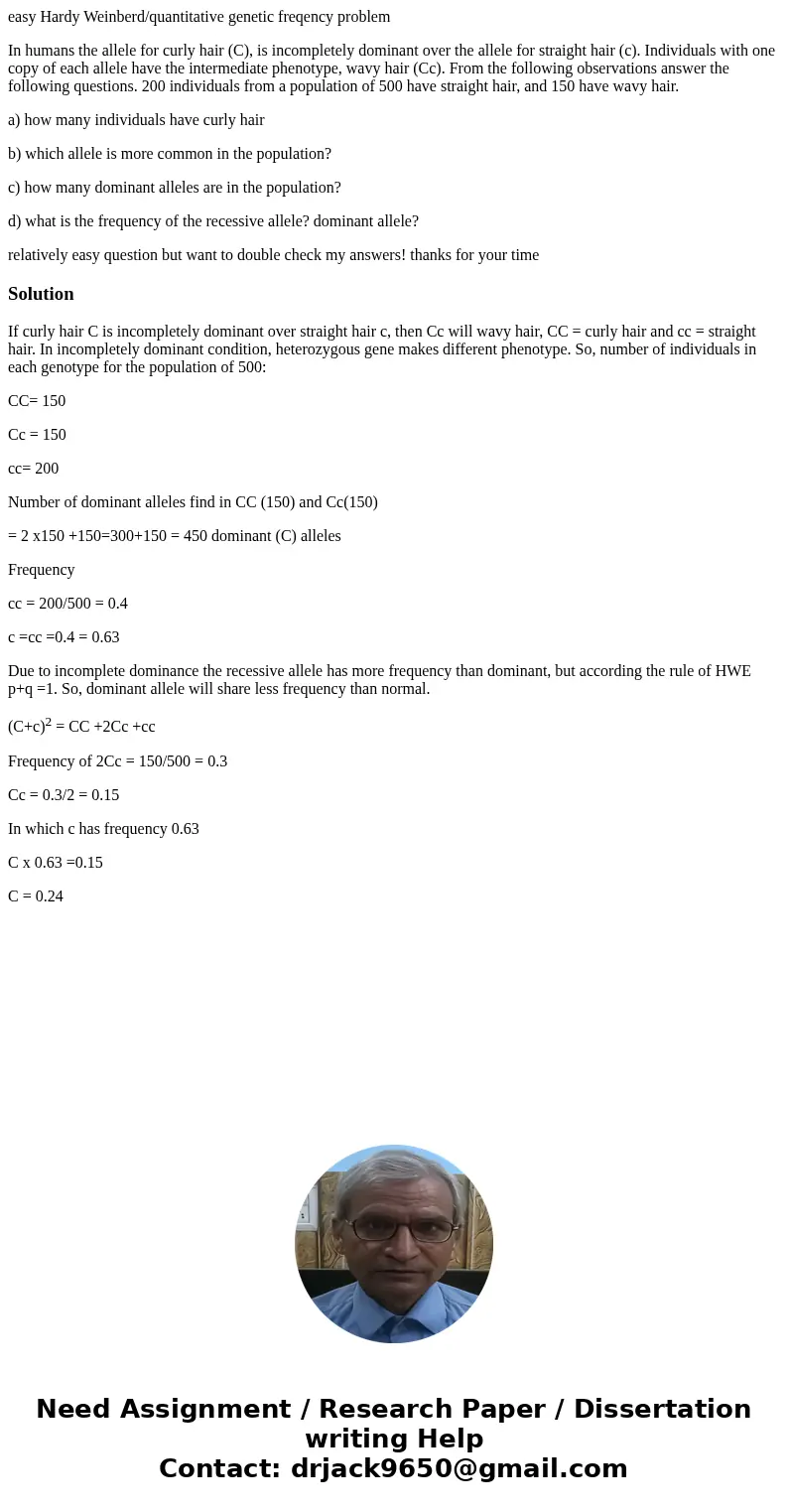easy Hardy Weinberdquantitative genetic freqency problem In
easy Hardy Weinberd/quantitative genetic freqency problem
In humans the allele for curly hair (C), is incompletely dominant over the allele for straight hair (c). Individuals with one copy of each allele have the intermediate phenotype, wavy hair (Cc). From the following observations answer the following questions. 200 individuals from a population of 500 have straight hair, and 150 have wavy hair.
a) how many individuals have curly hair
b) which allele is more common in the population?
c) how many dominant alleles are in the population?
d) what is the frequency of the recessive allele? dominant allele?
relatively easy question but want to double check my answers! thanks for your time
Solution
If curly hair C is incompletely dominant over straight hair c, then Cc will wavy hair, CC = curly hair and cc = straight hair. In incompletely dominant condition, heterozygous gene makes different phenotype. So, number of individuals in each genotype for the population of 500:
CC= 150
Cc = 150
cc= 200
Number of dominant alleles find in CC (150) and Cc(150)
= 2 x150 +150=300+150 = 450 dominant (C) alleles
Frequency
cc = 200/500 = 0.4
c =cc =0.4 = 0.63
Due to incomplete dominance the recessive allele has more frequency than dominant, but according the rule of HWE p+q =1. So, dominant allele will share less frequency than normal.
(C+c)2 = CC +2Cc +cc
Frequency of 2Cc = 150/500 = 0.3
Cc = 0.3/2 = 0.15
In which c has frequency 0.63
C x 0.63 =0.15
C = 0.24

 Homework Sourse
Homework Sourse